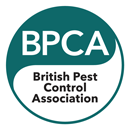Whether it’s a honeybee hive nestled in a residential area or a bumblebee colony disrupting commercial operations, our experts utilise specialised equipment and environmentally friendly methods to relocate the nests without harm. We prioritise the well-being of bees while ensuring the safety and satisfaction of our clients. Trust Vergo for efficient and responsible bee nest removal services across the UK.
Our prices are very competitive and market-appropriate compared to our nearest competitors. With more than 45 years of experience and a loyal client base, you can have peace of mind when enlisting our expertise.

